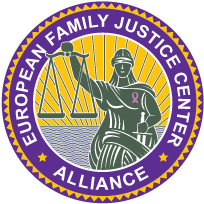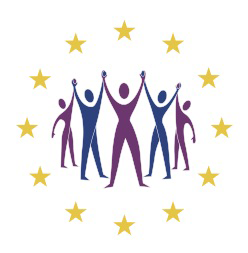COVID 19 impact on domestic violence and child abuse
Practical guidelines on safety measurements for virtual collaboration in assisting survivors from domestic violence and their families
Due to the COVID-19 measures, a lot of assistance has been replaced by telephone contact, chatting through social media channels and/or video calling (online contact through the internet). However, these forms of communication are much less safe for victims for the following reasons:
- Communication takes place from home and there is no control on who may be possible listening. There is a real chance that the perpetrator will listen in the background to what is being said. Under normal circumstances it is often already a barrier to tell the whole story. The current situation raises this threshold.
- Many of the communication channels that are used leave a usage history (history of calling behavior, chats sessions, video calling). It requires knowledge to erase properly this history. Some specific websites that focus on assisting in violent situations sometimes have an ‘escape’ button, a button for victims who seek online help to quickly click away the screen and therefore avoiding the risk that the perpetrator will discover that a certain website was visited.
- Within chat sessions, people can also pretend to be someone else. Always double check that you are chatting with the right person.
How do reduce these risks? Some practical guidelines:
- Teach victims how to delete the history of their calls, chats, video calling history
- Enter an ‘escape’ button in your websites and chat forums to quickly clear the screen in case of possible danger
- Ask victims during telephone and/or online consultations who is in the house, do this as an informative question so that they can answer safely.
- Agree a password with victims if you chat with them and you’re not able to check their identity, so that you can check whether it is safe and the same person during a follow-up conversation (by example a code word or answer to a specific question
- Try to make as many conversations as possible through video calling where you can see each other (by example Skype, Facetime, Zoom). Important non-verbal communication becomes visible and it will give the professional a lot of useful information.
- Double check as much as possible whether your message is understood as you mentioned. Also double check whether you have properly understood the client's message. By telephone/online communication, there’s a greater change that messages are misunderstood and there’s a greater chance of miscommunication.
Communicating through online platforms, such as chatting and video calling, is very different from a personal conversation. Long breaks can occur during a conversation, there can be a lot of variation in time between the different contact moments or the client can completely stop communication. It is important for the professional to be alert on these situations and not to assume that no news means good news. In some cases, an outreach is done 1 or 2 times and further initiative is left to the client in case of non-response. Without contact, it is difficult to estimate whether the help is no longer needed or desired, whether it is not safe for the family members to continue the conversation or whether a crisis has started or is stopped.
How can I assure optimal communication with clients? Some practical guidelines:
- If you lose contact with other people in the client's social network, try to find out if they are in contact with your client. If necessary, do an outreach to restore contact or assess the situation.
- Try to estimate the situation based on the already existing knowledge of the dynamics within the family. Let the previously made risk assessment help determine whether you are taking further action or not.
- Contact the chain approach or relevant partner organisations available in your region to organize an online consultation with each other to discuss the situation in a multidisciplinary setting. A joint risk assessment can provide much foundation for possible decisions for further action.
- Ensure that people who are quarantined at home, by example in a separate room due to illness, can also be reached safely.
- Prepare a number of standard answers in advance but be aware of the risk that these can be experienced as dismissive and that may prevent victims, perpetrators and their family members from making further contact. Whenever possible, try to combine the standard answers with a personal outreach, especially in crisis situations and with people under great stress.
- A good possibility is to organize with the client regular (daily or weekly) contact moments and create an opportunity for other professionals to also participate during these contact moments. This will create the possibility to keep an overview of the possible needed assistance and create a bridge with permanent contact persons at the police and judicial authorities for urgent interventions in the event of (imminent) escalation.


